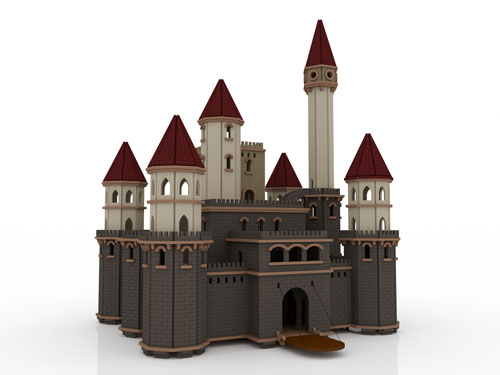A fairy tale is a type of short story that typically features folkloric fantasy characters, such as fairies, goblins, elves, trolls, dwarves, giants, mermaids, or gnomes, and usually magic or enchantments. Fairy tales may be distinguished from other folk narratives such as legends which generally involve belief in the veracity of the events described and explicitly moral tales, including beast fables.
In less technical contexts, the term is also used to describe something blessed with unusual happiness, as in "fairy tale ending" (a happy ending) or "fairy tale romance" though not all fairy tales end happily. Colloquially, a "fairy tale" or "fairy story", can also mean any farfetched story or tall tale; it's used especially of any story that not only isn't true, but couldn't possibly be true.
In cultures where demons and witches are perceived as real, fairy tales may merge into legends, where the narrative is perceived both by teller and hearers as being grounded in historical truth. However, unlike legends and epics, they usually do not contain more than superficial references to religion and actual places, people, and events. They take place once upon a time rather than in actual times.
Fairy tales are found in oral and in literary form. The history of the fairy tale is particularly difficult to trace because only the literary forms can survive. Still, the evidence of literary works at least indicates that fairy tales have existed for thousands of years, although not perhaps recognized as a genre; the name "fairy tale" was first ascribed to them by Madame d'Aulnoy in the late 17th century. Many of today's fairy tales have evolved from centuries-old stories that have appeared, with variations, in multiple cultures around the world. Fairy tales, and works derived from fairy tales, are still written today.
The older fairy tales were intended for an audience of adults, as well as children, but they were associated with children as early as the writings of the précieuses. The Brothers Grimm titled their collection Children's and Household Tales, and the link with children has only grown stronger with time.
Folklorists have classified fairy tales in various ways. The Aarne-Thompson classification system and the morphological analysis of Vladimir Propp are among the most notable. Other folklorists have interpreted the tales' significance, but no school has been definitively established for the meaning of the tales.

A castle is a type of fortified structure built in Europe and the Middle East during the Middle Ages by nobility. Scholars debate the scope of the word castle, but usually consider it to be the private fortified residence of a lord or noble. This is distinct from a palace, which is not fortified; from a fortress, which was not always a residence for nobility, and from a fortified settlement, which was a public defence – though there are many similarities among these types of construction. Usage of the term has varied over time and has been applied to structures as diverse as hill forts and country houses. Over the approximately 900 years that castles were built they took on a great many forms with many different features, although some, such as curtain walls and arrowslits, were commonplace.
A European innovation, castles originated in the 9th and 10th centuries, after the fall of the Carolingian Empire resulted in its territory being divided among individual lords and princes. These nobles built castles to control the area immediately surrounding them, and were both offensive and defensive structures; they provided a base from which raids could be launched as well as protection from enemies. Although their military origins are often emphasised in castle studies, the structures also served as centres of administration and symbols of power. Urban castles were used to control the local populace and important travel routes, and rural castles were often situated near features that were integral to life in the community, such as mills and fertile land.
Many castles were originally built from earth and timber, but had their defences replaced later by stone. Early castles often exploited natural defences, and lacked features such as towers and arrowslits and relied on a central keep. In the late 12th and early 13th centuries, a scientific approach to castle defence emerged. This led to the proliferation of towers, with an emphasis on flanking fire. Many new castles were polygonal or relied on concentric defence – several stages of defence within each other that could all function at the same time to maximise the castle's firepower. These changes in defence have been attributed to a mixture of castle technology from the Crusades, such as concentric fortification, and inspiration from earlier defences such as Roman forts. Not all the elements of castle architecture were military in nature, and devices such as moats evolved from their original purpose of defence into symbols of power. Some grand castles had long winding approaches intended to impress and dominate their landscape.
Collect your Fairy Tale Castle Today!
